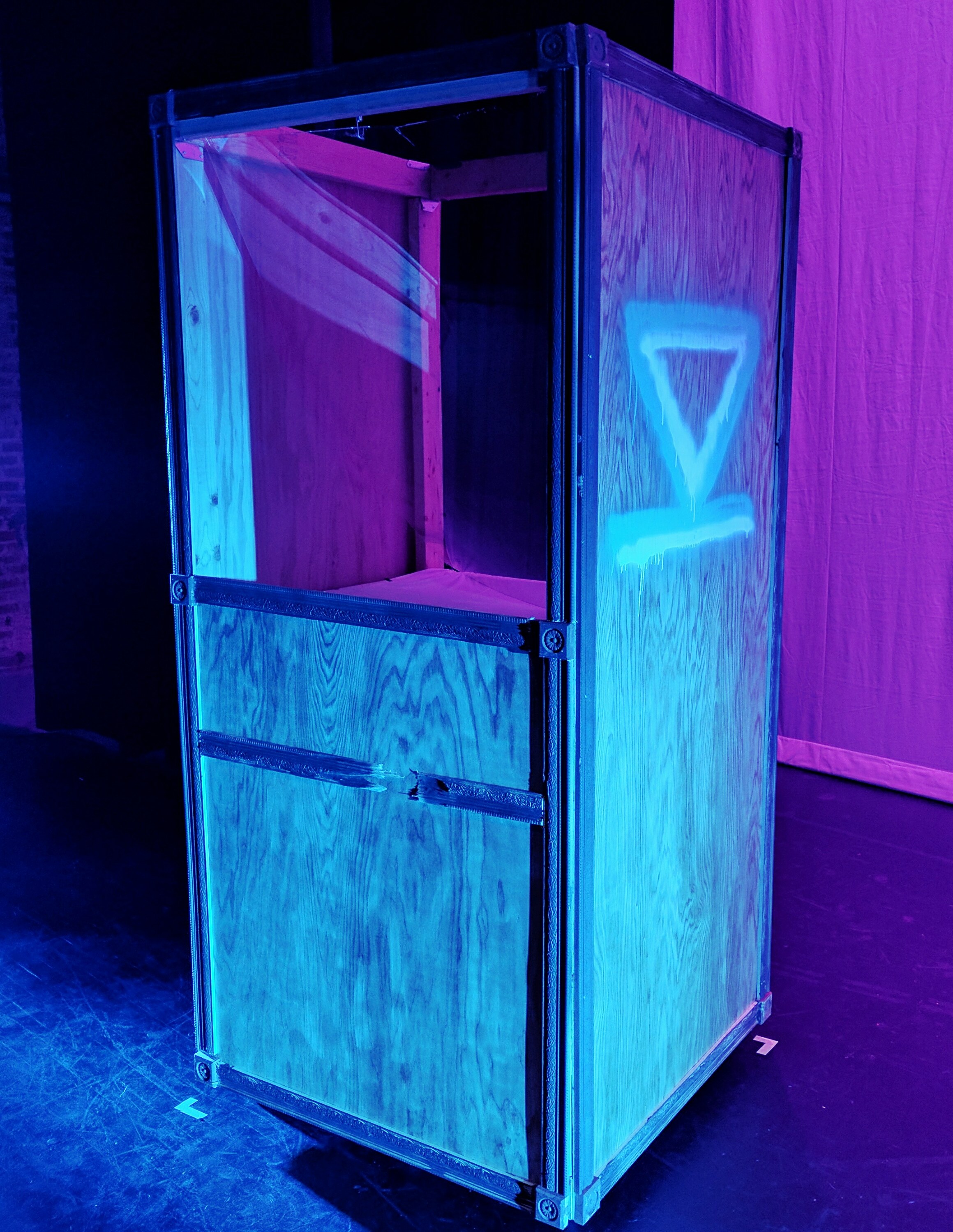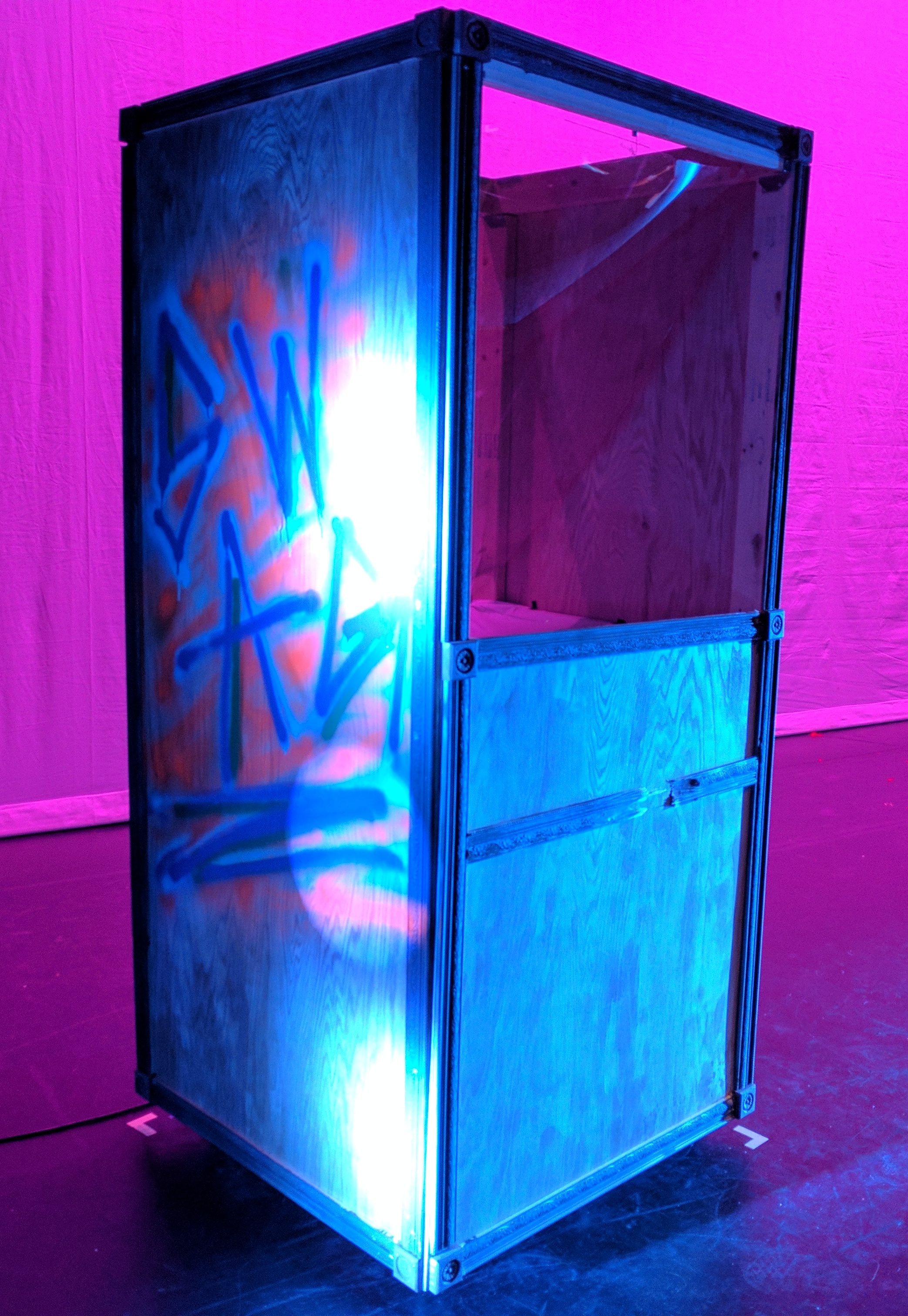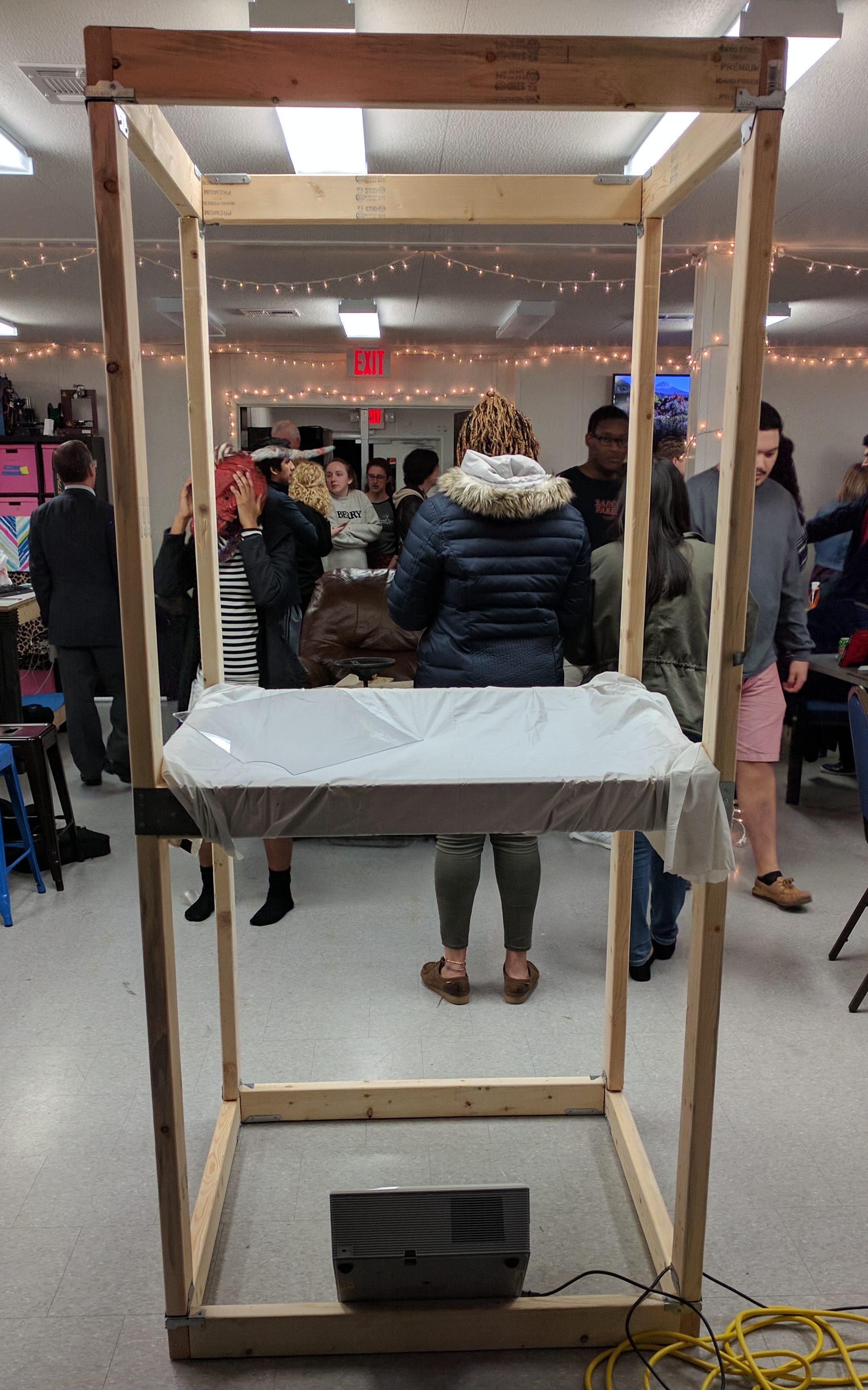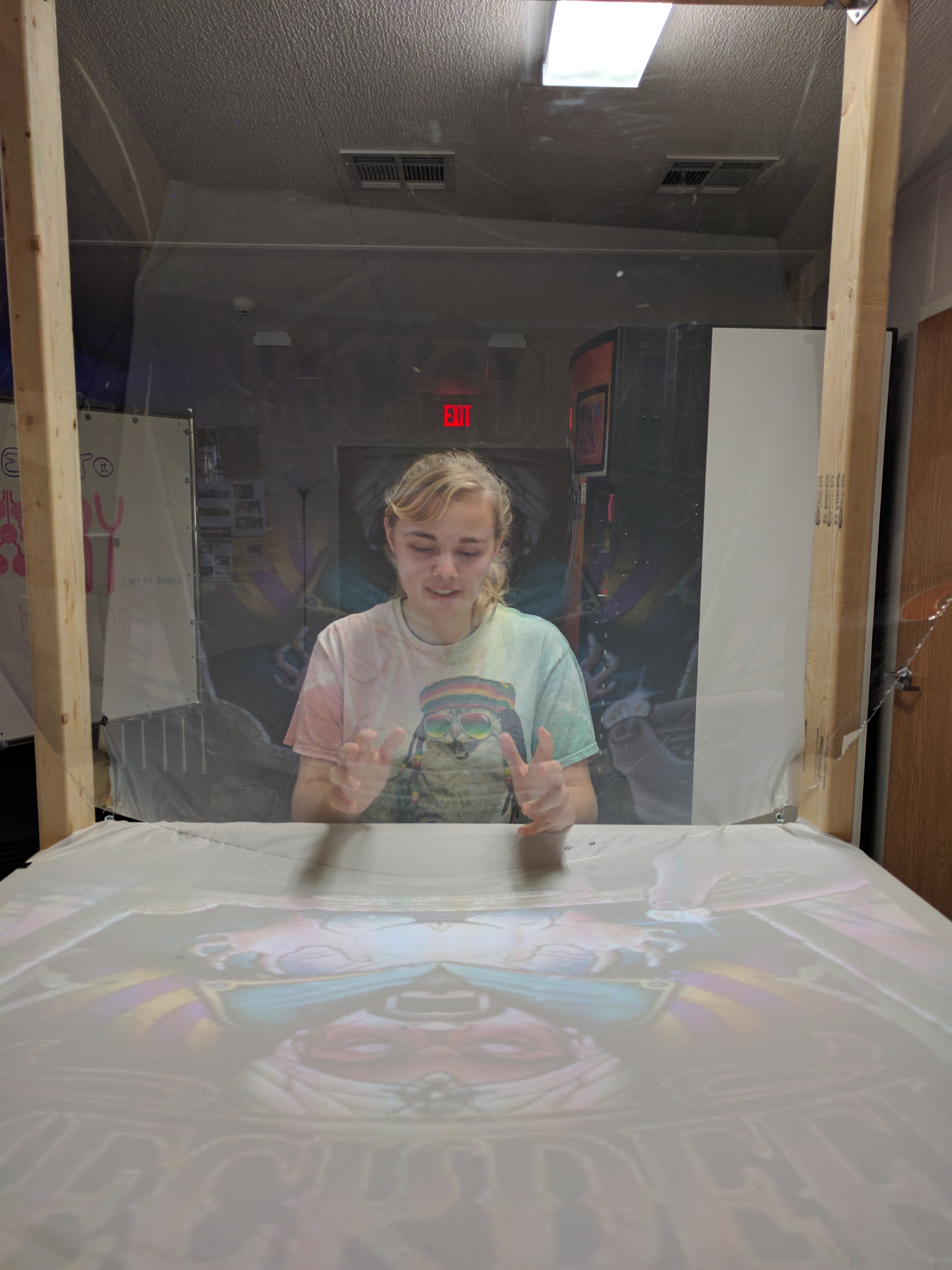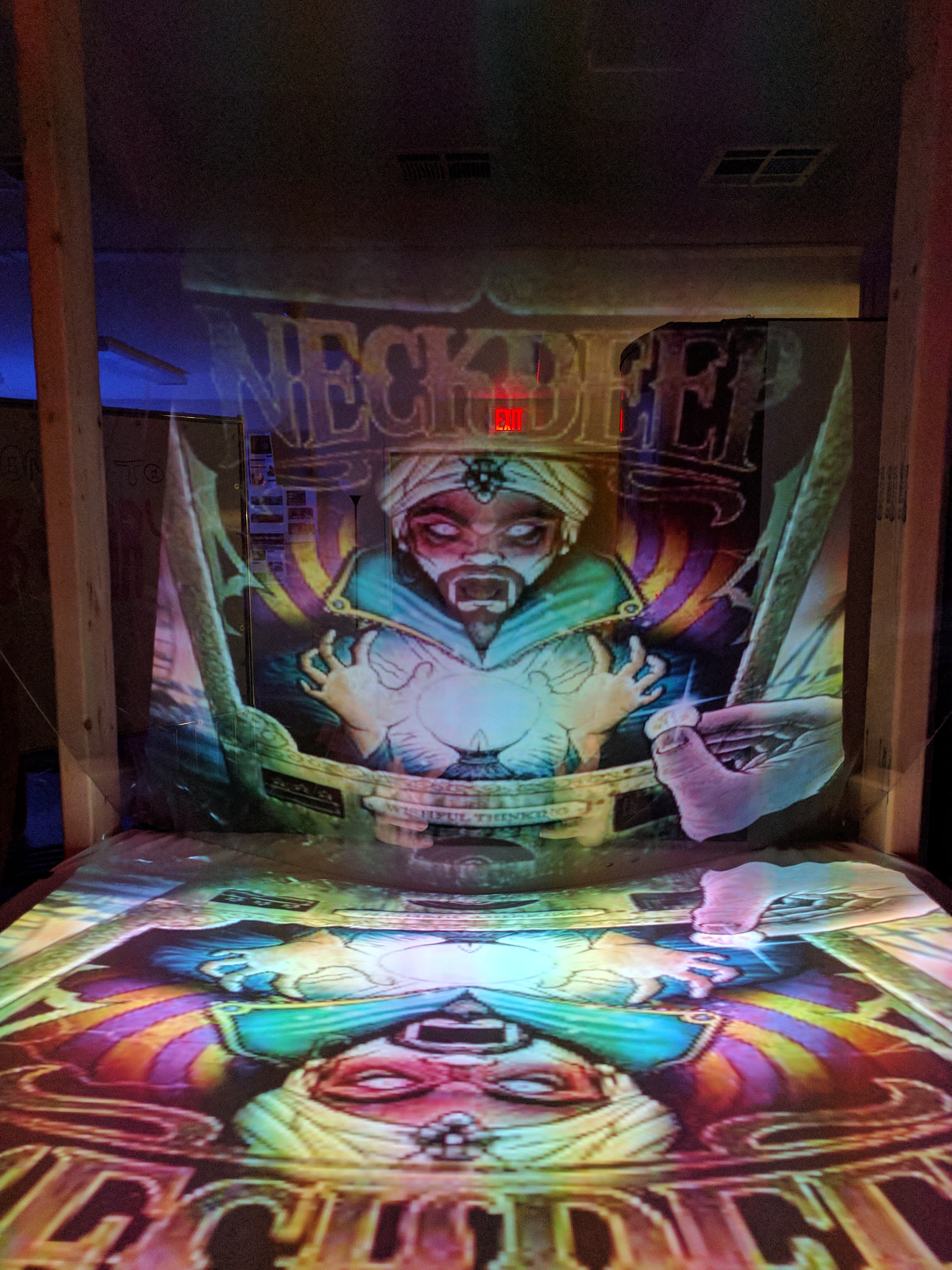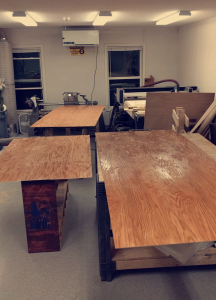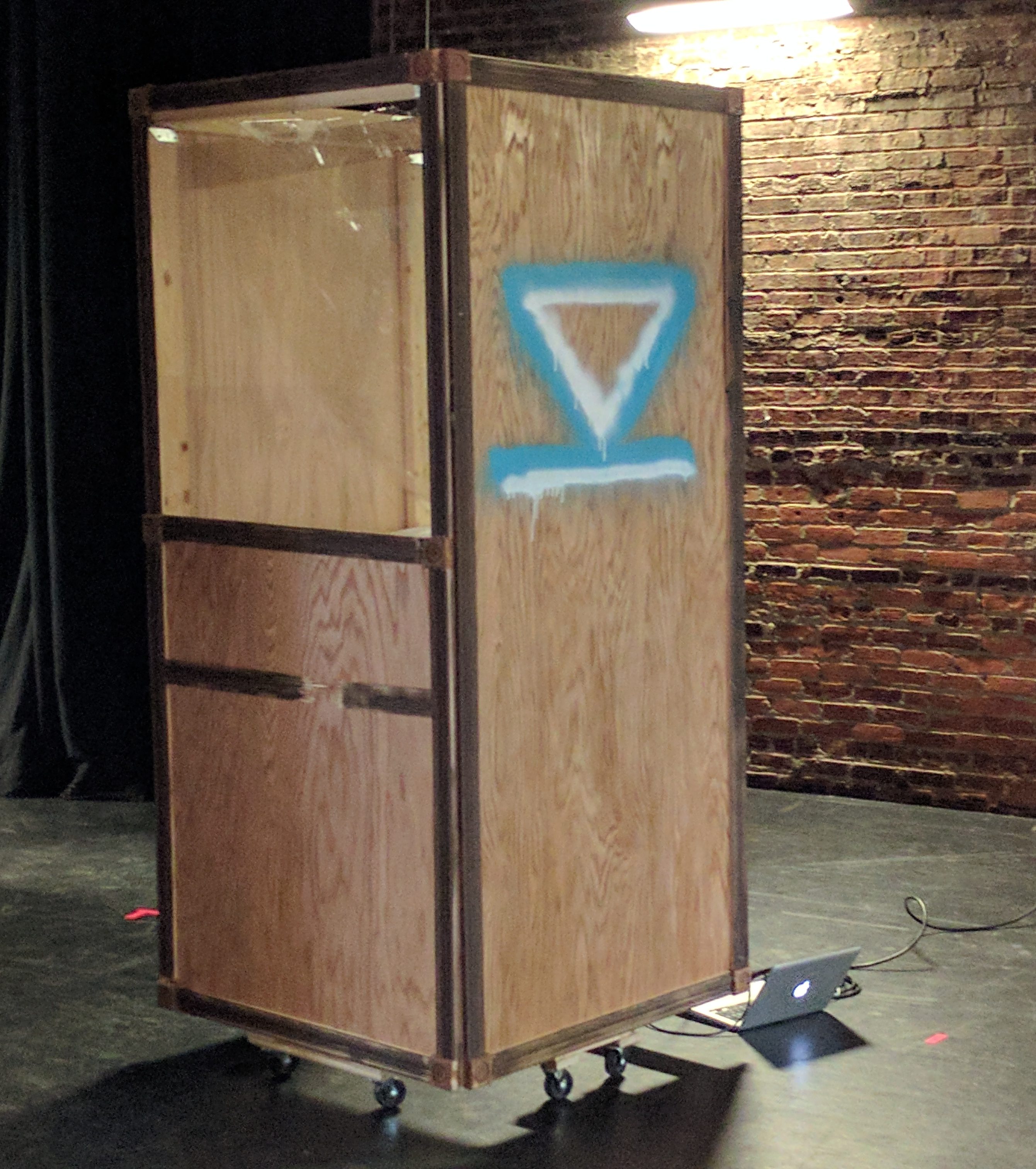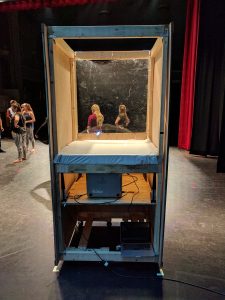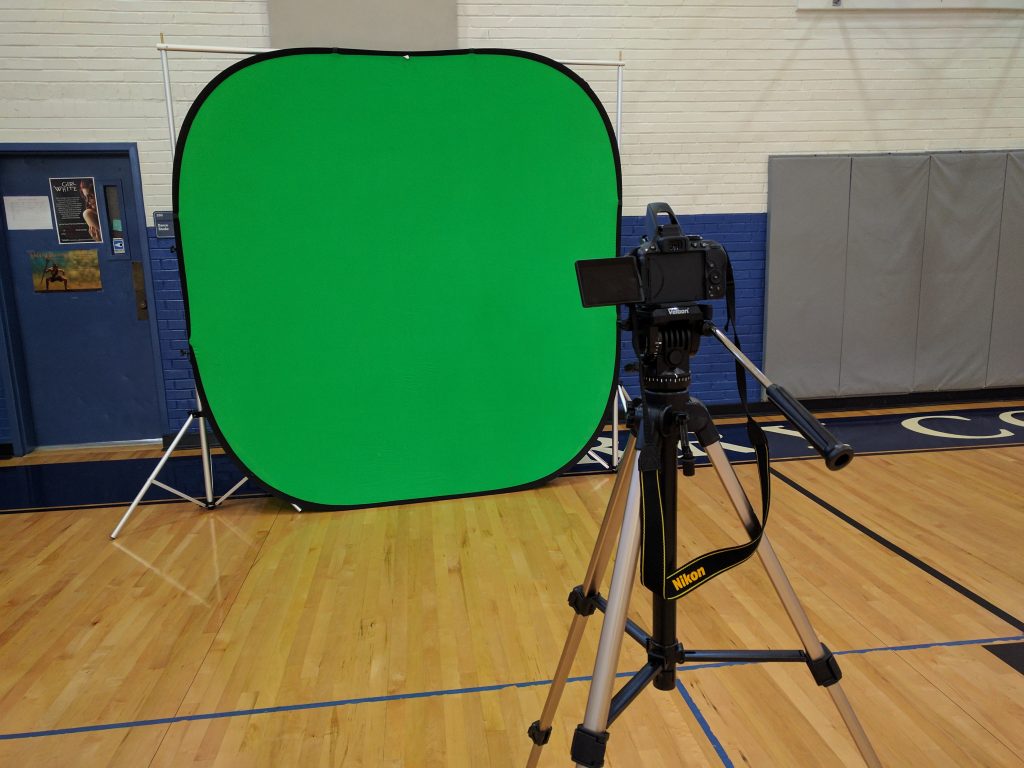Development
HoloView Zoltar represents the culmination of 2 years of research into semi-holographic displays. During my time performing as the Emcee in Berry College Theatre Company’s production of Cabaret, I became close with choreographer Payton Campbell. After seeing my work with interactive semi-holography, Payton asked me to build him a custom semi-holographic display for a specific dance that would be performed at the Berry College Dance Troupe’s Spring performance. Payton wanted a set piece that looked like a Zoltar animatronic fortune telling machine. At the beginning of the dance, the display would be off, with the dancer playing the gypsy fortune teller visible standing behind the piece. After the music starts, the dancer leaves, but reappears as a hologram inside of the display at various points of the dance. As the dance ends, the gypsy has been replaced with her victim who is now trapped inside the display as a hologram. In addition to building the physical set piece, I also directed, filmed, and edited the movie that would be shown inside the display during the dance.
the prototype
Constuction of HoloView Zoltar began Friday February 17th at the monthly Hackberry Hackathon. During the first 4 hours of construction, I was able to assemble the majority of the frame, shown below. Various 2×4’s are held together by metal brackets in order to create a lightweight but sturdy frame.
Though lacking in physical appearance, the frame was fully functional once a sheet of PETG plastic was hung at roughly a 45 degree angle. For more information on the lighting techniques used to create the semi-holographic images, read about the Pepper’s Ghost Illusion. Here are the “Hello World” test images, with the lights on and lights off:
Oak plywood was stained with polyurethane and then added to the sides. A shelf was added to the frame in order to hold the projector at the right distance from the shower curtain that collects the image. Wood trim was spray painted and added along the edges. Wheels were added, allowing for the set piece to be rolled on and off stage. Following this, portions of the set piece were further distressed to achieve the look that Campbell was looking for, and “graffiti” was added to the sides. Construction of HoloView Zoltar took about 15 hours total.
Next, I needed to create the movie that would be shown inside of HoloView Zoltar. I rented a Nikon DSLR and a green screen from Viking Fusion, Berry College’s visual communications department. I set up outside of a dance troupe rehearsal, and directed the dancers one at a time to get the raw visual footage that would later become the holograms. The dancers were in full costume and makeup. Below is a photo of my setup and an example of the raw footage that would eventually be used in HoloView Zoltar:
This raw footage was then put through Adobe After Effects to replace the green background with a black one, in addition to other edits such as adding a white border around the dancer with black hair. After about 15 hours total, the final digital media was performance ready. Below is the video that was projected onto HoloView Zoltar during performances:
I was present at each tech rehearsal and performance to run HoloView Zoltar. Because of the limitations of AV cables available, I was hidden onstage during each performance to ensure that the semi-holographic images displayed were synced with the external music for the dance. From start to finish, HoloView Zoltar took about 30 hours to complete, but the result was a stunning set piece that was very well received. Below is some onstage test footage showcasing the finished HoloView Zoltar:
HoloView Zoltar was retired following the Berry College Dance Troupe’s last performance, but has since been added as a permanent member of HackBerry Lab’s prototype gallery. HoloView Zoltar won the 2017 HackBerry Iteration Award, the second HoloView project in a row to do so.

